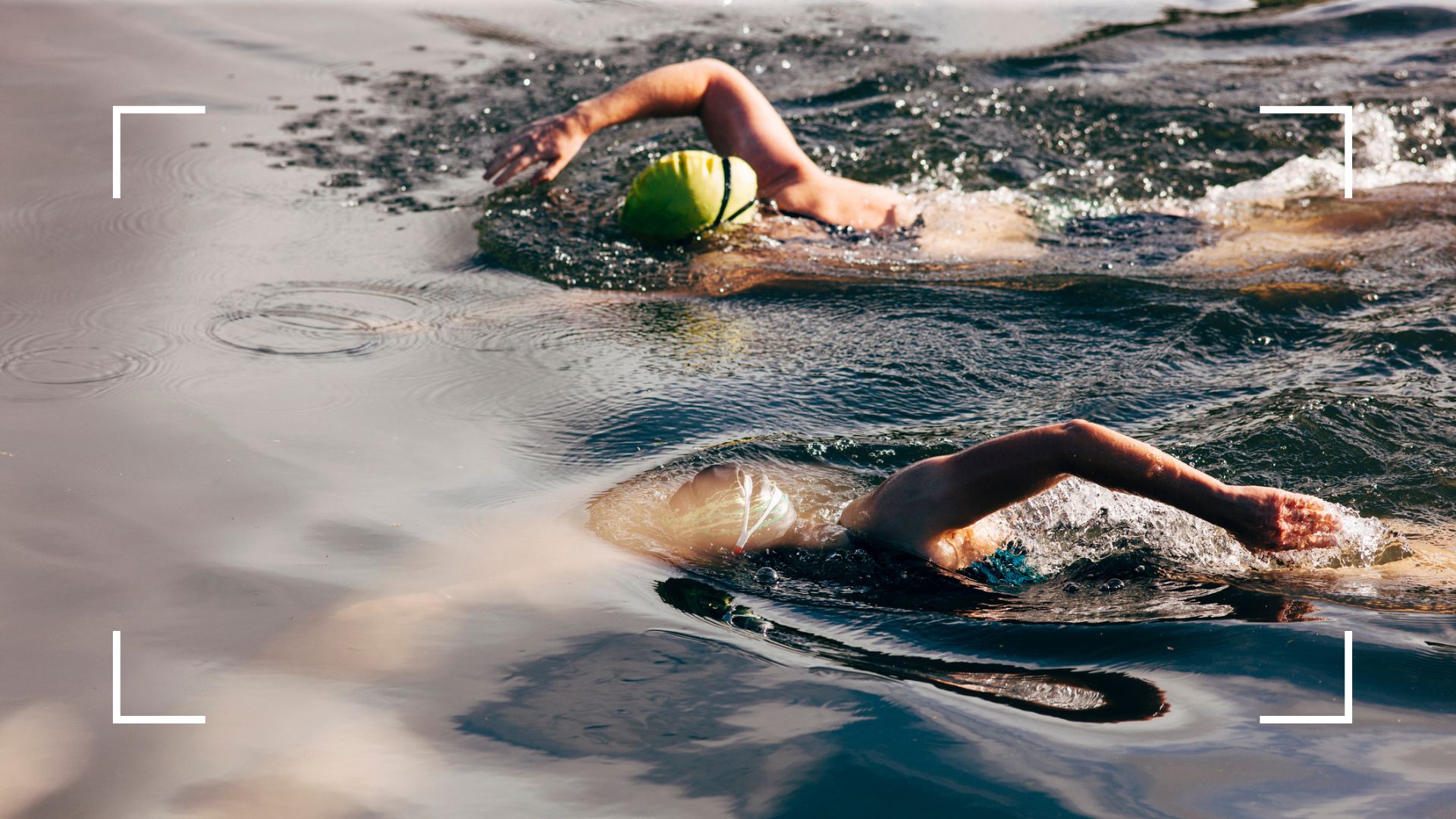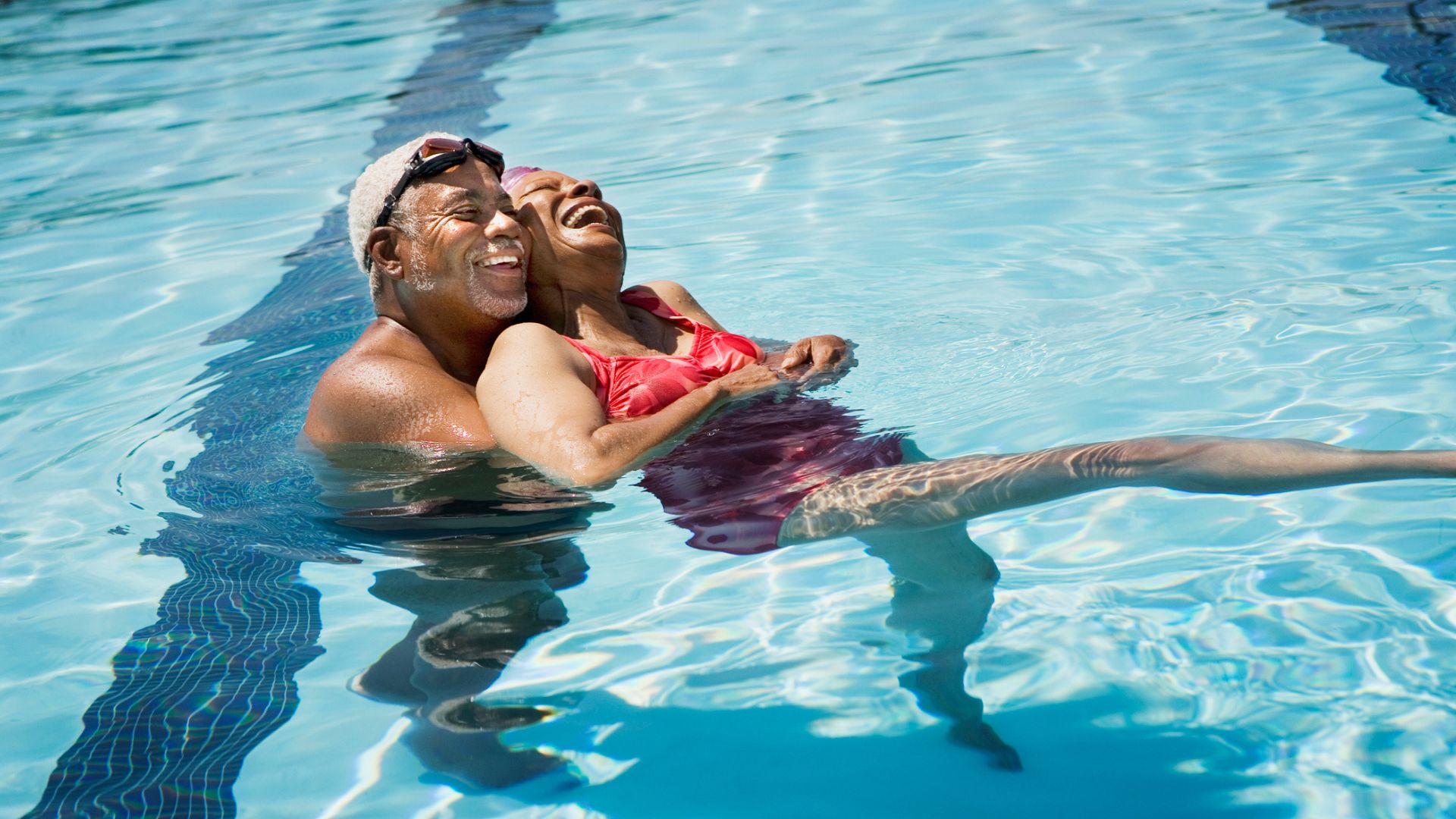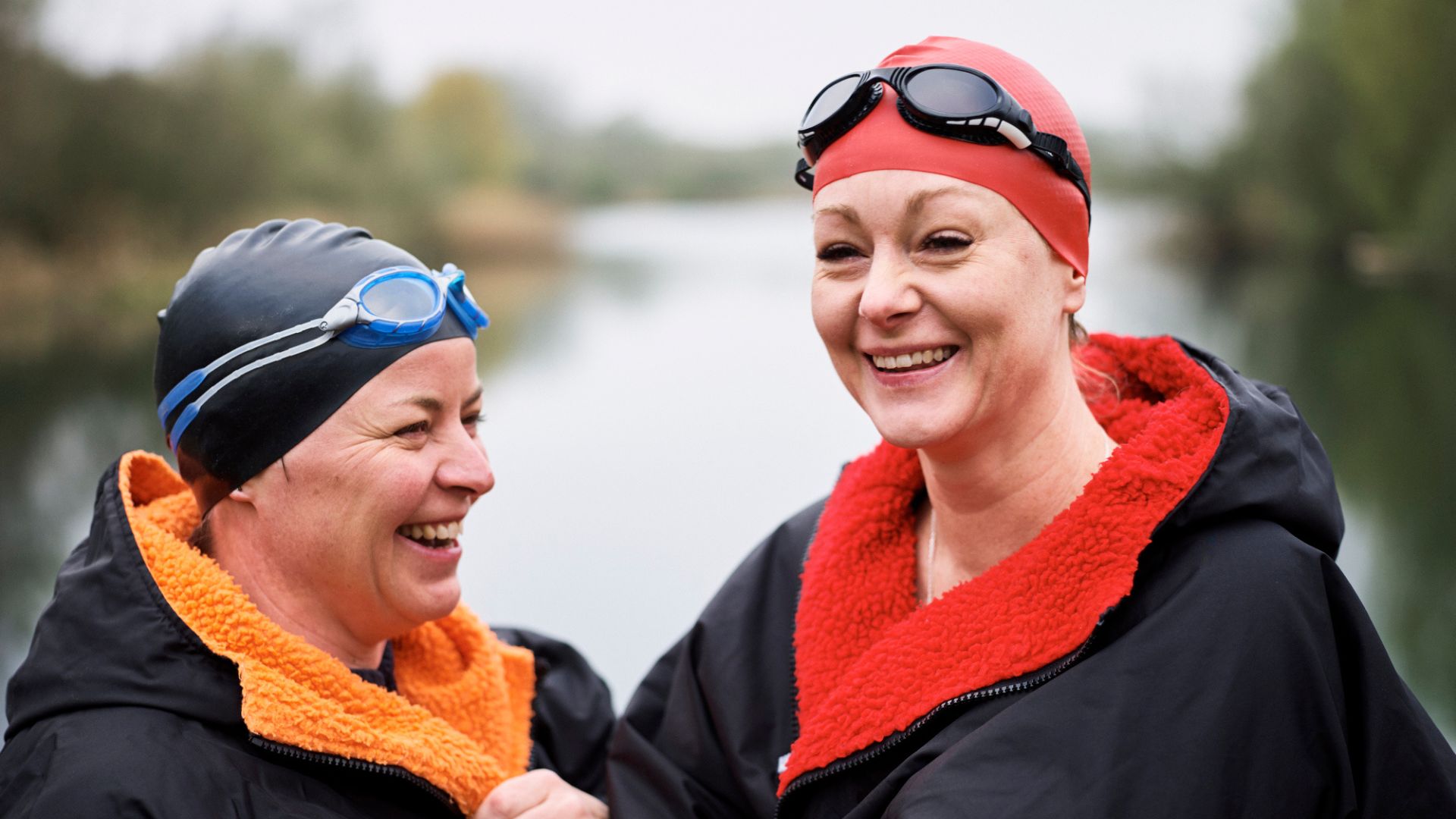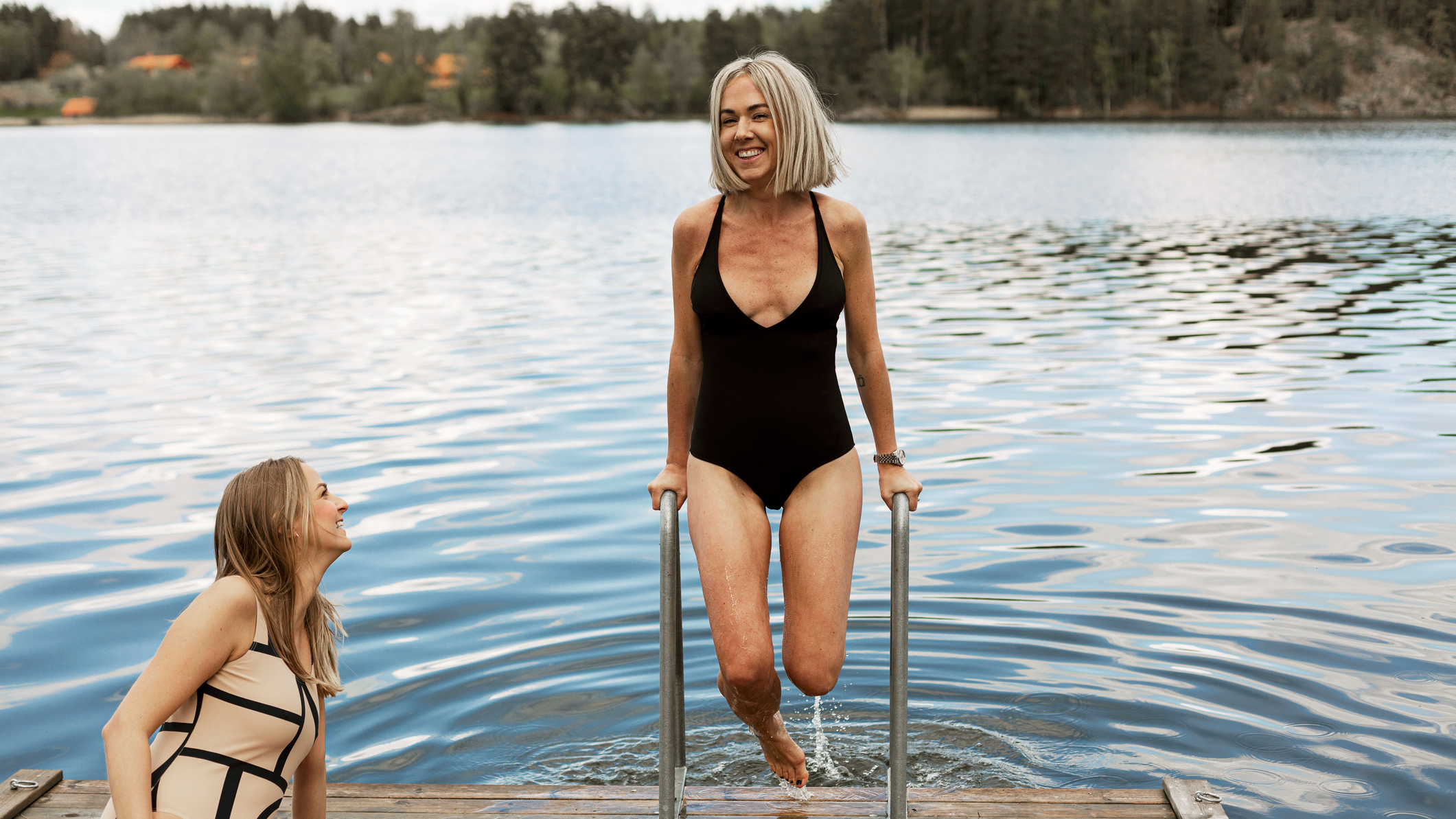7 benefits of swimming for both mind and body, whatever your fitness level
There are so many benefits of swimming. Here, several experts reveal what a difference it can make to your life


Did you know there are so many benefits of swimming beyond just fitness? Although it's naturally a huge motivation for many, millions of people regularly swim every year - and not everyone is in it for the exercise.
We regularly talk about all the health benefits that come with exercise generally, like how walking in green spaces tends to improve our mood and how running can have amazing serotonin-boosting effects - but we don't discuss swimming all that often. It's more than an activity bound to community pools but doesn't have to be nearly as extreme as open water exploration, swimming is a diverse activity that comes with reams of advantages for both body and mind.
So whether you're interested in how to learn to swim as an adult, doing swimming as a workout for beginners, or you're curious to know more about how going for a dip can cut your risk of mortality in half, this is what the experts want you to know about swimming.
Benefits of swimming
1. Full-body workout
While how long it takes to learn how to swim is one of the biggest things that puts people off getting better at the sport, its incredible workout potential keeps others going. If you're looking for a seriously good full-body workout, swimming should be the top of your list.
"Swimming is one of the most beneficial exercises for people of all ages because it provides a workout for your whole body," says senior pharmacist at Medicine Direct, Sonia Khan, who regularly suggests swimming to those who want to learn how to get fit and are new to exercise.
"When you're swimming, your arms, legs, feet, and hands are all needed to stay afloat and move around. For this reason, it makes for a gentle yet comprehensive form of exercise."
It's for this reason that swimming is also one of the best sleep aids. "You are more likely to feel tired when it comes to bedtime if you've been swimming," Khan adds. "You've worked your whole body in ways that you normally don't."
Sign up for the woman&home newsletter
Sign up to our free daily email for the latest royal and entertainment news, interesting opinion, expert advice on styling and beauty trends, and no-nonsense guides to the health and wellness questions you want answered.
2. Strengthens muscles
Similarly, for those looking to strengthen their muscles, swimming provides a great alternative option for those who'd otherwise be strength training.
"The resistance of the water as you move helps strength and tone your muscles," explains Phil Evans, lead physiotherapist at Urban Body. "As you push and pull yourself through the water, your arms and legs are combating water resistance all the time, forcing both major and minor muscles to flex, tone and strengthen."

3. Low-impact exercise
If you exercise regularly, it's common to experience issues with your joints, muscles, bones, tendons and other parts of your body that come under pressure. Swimming is a great alternative exercise, much like yoga for beginners, for freeing up your body from this pressure.
"Swimming is a low-impact and non-weight-bearing exercise, meaning that it doesn't put pressure on the spine, knees, or hips," notes Evans.
“In fact, it’s ideal for people who suffer from conditions like arthritis, since the buoyancy of the water helps support some of your body weight. This reduces strain on joints,” Khan adds, “You can swim even if you have injuries or a disability, which can often stop you from performing other types of exercise." But make sure you recover right too, ensuring you get all the types of rest you need to stay healthy.
4. Boosts heart health
Any cardio activity - including running and cycling - will reduce your chance of adverse cardiovascular conditions and swimming is another sport to add to that list.
"By putting your heart and lungs to work, swimming provides a great boost to your cardiovascular system,” says Giulia Guerrini, lead pharmacist at Medino. “Research from the University of South Carolina has shown that swimmers have half the risk of death compared to non-active people.”
Evans agrees, explaining, "As you swim your heart and breathing rate increase, allowing your body to get the required amount of oxygen and giving your heart a workout as it pumps more blood around your body." He adds that like other forms of aerobic exercise, such as Nordic walking, swimming reduces blood pressure and helps to raise good cholesterol levels, further reducing the risk of cardiovascular conditions.
However, there's even some evidence to suggest that compared to other forms of cardio exercise, swimming is better. Another study from the University of South Carolina, published in 2008, suggests that swimming alone halves the risk of death in men even when compared to those who run and walk. While the research acknowledges that a sedentary lifestyle is the biggest risk factor, it also suggests that swimming better maintains the cardiovascular system as swimmers tend to have lower cholesterol, fasting blood glucose, resting heart rates, and lower levels of a type of blood fat called triglycerides. They, therefore, have lower mortality rates.
5. Increases flexibility
It's not just activities like pilates for beginners that help to improve flexibility.
“Swimming is great for this too,” points out Evans. “The buoyancy of the water will reduce the amount of stress on your joints, making it easier for you to stretch through a full range of motion, and doing this regularly works to keep joints supple, which is an important factor for older adults’ health and well-being.”
6. Improves bone health
One of the biggest signs of being postmenopausal is a gradual decline in bone health. It starts as one of the perimenopause symptoms and puts many people at an increased risk of osteoporosis.
“After menopause, and even beforehand, bone thinning takes place due to a lack of estrogen," explains Dr Verity Biggs, GP at H3 Health. "By regularly exercising you can reduce this impact."

7. Aids mental wellbeing
Exercise is certainly no replacement for adequate mental health support. However, whether you personally suffer with a mental health issue or you're looking for how to support someone with depression and similar conditions, swimming can offer a helping hand to those who can exercise.
"Among several health benefits, swimming is known to decrease anxiety, and depression, and help you learn how to deal with stress, while also improving mood,” says Guerrini. “It has similarly been linked to slowing cognitive decline and dementia.” Evans adds, “Swimming, according to a study by Boston University School of Medicine also releases feel-good hormones called endorphins from the pituitary gland, which will help promote a positive daily outlook.”
Is swimming good for weight loss?
Yes, swimming is a great exercise for anyone looking for healthy weight loss methods. When it comes to swimming or anything else though, you will need a calorie deficit to lose weight. This is when the number of calories you burn every day exceeds the number you eat. Regardless of the type of exercise you do, you will need this to see any changes.
Swimming, and another exercise, helps us to get into this deficit though as it burns calories. As Lucy Arnold, personal trainer and founder of Lucy Locket Loves, says, “Getting into better exercise habits, like swimming, creates better lifestyle habits which in turn can help with weight loss and maintaining it.”
She notes that swimming, rather than other cardio like running for weight loss or walking for weight loss, is lower impact and can be done very much at your own pace. "You are also less likely to get injured and can keep on training for longer," she adds, "This will help you stay active and keep to your goals in the longer term too."
When it comes to swimming and losing weight though, the second most important factor is consistency. “Like with other forms of exercise, as long as you perform it consistently, combine it with balanced nutrition, and are in a calorie deficit, then your weight loss will be sustainable and healthy,” says Sarah Campus, personal trainer and founder of LDN Mums Fitness.
Looking to start swimming for weight loss? "Aim to swim four to five days a week, and mix up your routine to keep your body guessing—doing cardio and strength training on land too," she says.
What is the best way to get into swimming for weight loss?
If you want to start swimming for weight loss, Dr Biggs says that it's best to start slowly and build up. "Pick a stroke that you feel most comfortable with and start there, then gradually increase speed and stamina as well as the number of lengths and the time you swim for," she says.
She also has the following tips:
- Decide on a location - “Regular indoor swimming is warmer, and a comfortable surrounding in which to socialize with friends as you exercise,” says Dr Biggs. “There are benefits of cold water swimming and it's become very popular in the last couple of years. Wild swimming is a whole new ballgame, but as long as it is done safely, and you enjoy it then this is equally as good. What's more, you’ll burn more calories since your body uses more energy to keep warm as well as exercising, and it is also known to boost your immune system."
- Safety is important - “Don’t be afraid to have swimming lessons, even as an adult. Often a refresher is useful,” continues Dr Biggs. “You can also stay in the shallow end or near the side, until you gain confidence.” Before getting into the water, get prepared. “Be sure to warm up and stretch your muscles and joints, and have plenty of fluids on hand,” adds Campus. “Don't overdo it if you're just starting out, and see your doctor first if you haven't exercised in a long time.”
- Give yourself some support - “I find going with a friend often helps when you’re beginning,” recommends Penny Weston, a fitness and nutrition expert. “If you’re feeling self-conscious about being seen in a swimming costume, remember that most people are so preoccupied with themselves and their own bodies that they won’t notice what you look like.”

How to boost your swimming technique
1. Remember to breathe
“One of the most common pitfalls when swimming is holding your breath. You end up not being able to fuel your body with enough oxygen and therefore aren't able to swim very far, fast, or for long,” says Arnold.
To learn how to breathe better in the water, “start by practicing on land, breathing in and out of your nose, and humming on the exhale. You can try this in the pool before you even start to swim. Put your face in the water and breathe out of your nose, then come up and breathe in.”
2. Use all of your body
“Another common mistake is relying too much on your upper body, which then results in a very tired upper body leaving you unable to swim as fast,” explains Arnold. “You should use your arms for pulling your body through the water, your core to rotate in the water, and your legs for the kick which will propel you forward.”
3. Beware breaststroke
“Breaststroke is typically the easiest for beginners to learn,” says Arnold. “One of the key reasons for this is that it allows you to keep your head above water at all times.” But make sure you switch it up with other types of stroke, like freestyle and back crawl.
Evans notes, “Be careful how much breaststroke you perform as the repetitive stress of this stroke during the whip-like motion can cause medial knee pain."
4. Perfect your freestyle
Also known as front crawl, this stroke is suitable during pregnancy as keeps hips in a neutral position. “Spread your fingers slightly to pull yourself along,” explains Campus. “Kick like a champion, use your legs to provide a strong foundation for your stroke.”
She adds that a common mistake is using short arm lengths and you should also maintain a neutral head position, and turn it to the side, not the front, to inhale and exhale in the water.

Lauren is a freelance writer and editor with a decade of print and digital journalism experience. While she specialises in covering health and wellness topics - ranging from nutrition and fitness, to women’s health conditions and mental wellbeing - she has written across a diverse range of lifestyle topics, including fashion, beauty, interiors and travel.
In addition to writing for Woman & Home and sister title Homes & Gardens, Lauren's work has also been published by Women’s Health, The Times, Daily Telegraph, Elle, Cosmopolitan, The Guardian, Marie Claire, Body + Soul, Stylist, Glamour, Grazia, Red, Dazed Digital, Yahoo Life, The Sun’s Fabulous, Get The Gloss and Hello! among others.
-
 Aldi's affordable bedding is actually made by my favourite sleep brand - it's got more than your duvet covered
Aldi's affordable bedding is actually made by my favourite sleep brand - it's got more than your duvet coveredAldi's Anti-Allergy Bedding has arrived in the middle aisle and it's more affordable than the best mattress toppers, duvets, and mattress protectors out there
By Laura Honey Published
-
 Unforgettable date ideas to make a great first impression or rekindle romance
Unforgettable date ideas to make a great first impression or rekindle romanceForget the same old first date formula - these unforgettable date ideas will leave them thinking about you long after you go home
By Natalie Denton Published